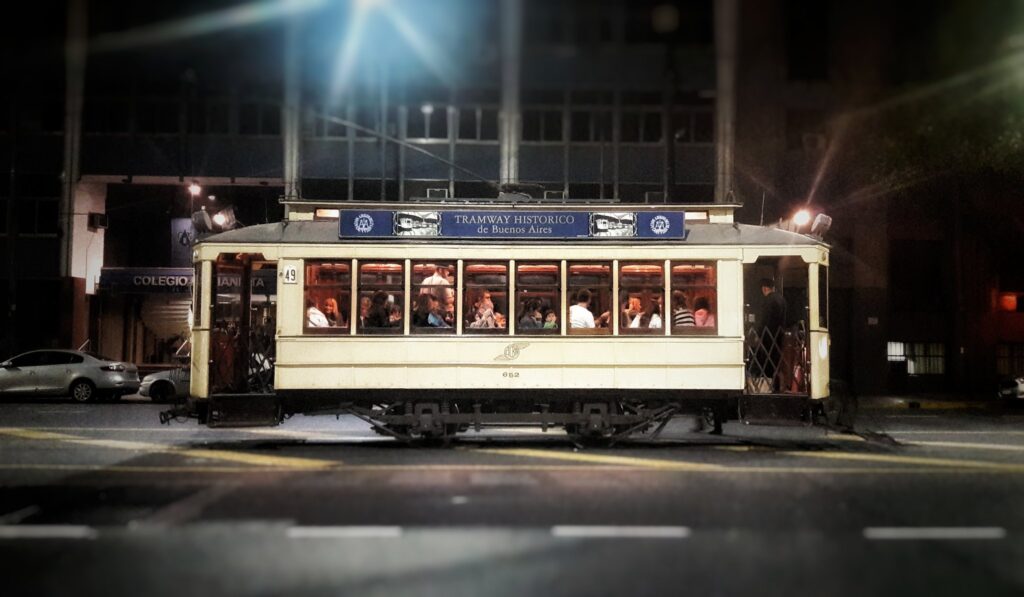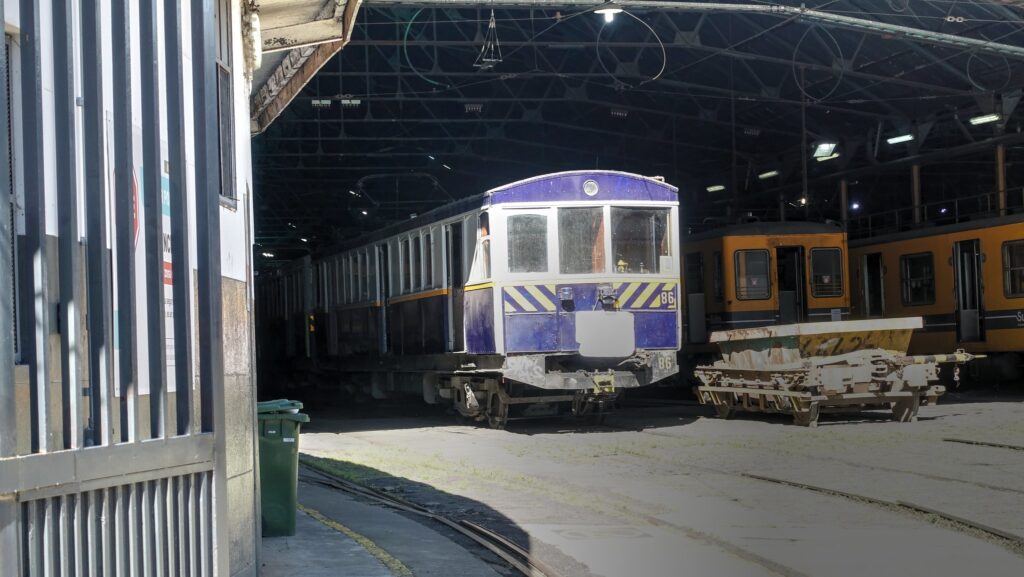Curious about the last surviving tramway in Buenos Aires? The Historic Caballito Tramway is indeed still running, offering a unique ride through the tranquil, residential neighborhood of Caballito.
This experience harks back to the days when trams were a key part of the city’s urban and public transportation system until they were largely replaced by buses in the 1960s and 1970s.
Don’t miss the chance to step back in time and explore this charming piece of Buenos Aires history. In this guide, ExpatPathways will provide you with everything you need to know before your visit.
Historic Caballito Tram (Buenos Aires): Everything You Need to Know Before Your Visit
What is the Historic Caballito Tramway?
For 100 years, the tramway was a crucial urban transportation method in Buenos Aires until it abruptly disappeared in 1963.
In the 1980s, the tramway experienced a revival thanks to the Asociación Amigos del Tranvía, which now offers 20-minute rides through the Caballito neighborhood.
The Experience
Riding these historic trams is an experience for the whole family. Every detail is thoughtfully designed: the old tram cars, the ticket given upon boarding, and the conductor’s attire all transport you to another era.
The Asociación Amigos del Tranvía
Founded on July 16, 1976, the Asociación Amigos del Tranvía is a non-profit organization dedicated to preserving the history and promoting the future of tramway transportation.
Since 1980, they have operated the Tramway Histórico de Buenos Aires, recognized worldwide as a living museum on wheels.
The Tramway as a Living Museum
The historic tramway is envisioned as a moving, living museum that entertains, educates, and honors a once-crucial mode of urban transport in Buenos Aires.
The association has acquired and restored various tramcars, with nine currently operational, forming part of the regular and special activities of the Tramway Histórico.
Restoration and Preservation
The association’s mission includes locating, acquiring, and restoring different tramcars. Since the first tram’s inauguration on November 15, 1980, they have expanded their collection to eighteen tramcars, nine of which are operational.
By organizing and structuring the information with these subtitles, the reader can easily follow the history, experience, and efforts behind the historic Caballito tramway.

Where is the historic Caballito tramway located?
The historic tramway is located in the Caballito neighborhood. While the original tramway routes spanned the entire city, the last remaining tram now operates in Caballito.
Geographically, the tramway runs through the southern part of Caballito, near the Parque Chacabuco neighborhood. The route is bounded by Rivadavia Avenue to the north and Directorio Avenue to the south.
To reach the historic Caballito tramway, you have several transportation options:
- Subway: The A and E subway lines have stations relatively close by. The Emilio Mitre station on the E line is three blocks from the tram’s starting point, while the Primera Junta station on the A line is seven blocks away.
- Trains: The Sarmiento railway line has a station in Caballito, just six blocks from the tram stop.
- Buses: Caballito is serviced by numerous bus lines. Some of the closest lines include the 26, 56, 103, 126, 134, 155, and 180, among others.
Additionally, the Caballito area around the historic tramway is accessible by private vehicle, as it typically experiences little traffic congestion and is relatively calm.
What Route Does the Historic Caballito Tramway Take?
The historic Caballito tramway follows a route that includes Emilio Mitre Street, Rivadavia Avenue, Hortiguera Street, and Directorio Avenue. The journey starts and ends at the corner of José Bonifacio and Emilio Mitre streets.
Schedule
- Saturdays, Sundays, and Holidays (Afternoon):
- June to August (“Winter”): 3 PM to 6 PM
- September to November (“Spring”): 4 PM to 7 PM
- December to February (“Summer”): 5 PM to 8 PM
- March to May (“Autumn”): 4 PM to 7 PM
- Sundays (Morning):
- All year round: 10 AM to 1 PM
Important Information
- Free Service: No reservations are required. Just line up at the stop, first-come, first-served.
- Departures: Every 20-25 minutes
- Approximate Travel Time: 20 minutes

Why Is It Important to Know the Historic Caballito Tramway?
Historical Importance of the Tramway in Buenos Aires
The tramway was a prominent transportation method during its heyday in Buenos Aires. As you walk through the city center, you might notice the abandoned tracks of trams that once served the city for both passenger and freight transportation.
While some trams continued operating in certain parts of the city until the 1960s and 1970s, they were eventually all decommissioned. The last tram in Buenos Aires ran on May 2, 1963, on Line 44, which connected Plaza de Mayo with La Boca.
A Pleasant Journey
Tired of the fast-paced, hectic lifestyle that cities like Buenos Aires impose? The Caballito Historic Tramway offers a chance to relax, sit back, and enjoy a leisurely ride through the streets of Buenos Aires.
Discovering the Caballito Neighborhood
Tourist guides often overlook the Caballito neighborhood. It’s as if the neighborhood doesn’t exist on some maps or tourist guides of Buenos Aires.
The initiative by the Asociación Amigos del Tranvía not only highlights the value of the tramway as a mode of transportation but also encourages travelers to visit and explore the Caballito neighborhood.
A Perfect Photo Opportunity
One of the most beautiful mementos you can take from your stay in Buenos Aires is a photo aboard the historic Caballito tramway.
You can film the journey through the streets and take pictures while enjoying the tranquility and pride of riding the last surviving tram in Buenos Aires.
Last Considerations
Can you think of a better way to spend 30 minutes in Buenos Aires than riding the Historic Caballito Tram? This free attraction allows you to sit back and enjoy a leisurely journey through the picturesque streets of Caballito, a neighborhood brimming with activities and sights to explore.
It’s an experience that digital nomads, travelers, and expats alike will find both relaxing and enriching.
Don’t miss out on this unique adventure, and for all the details you need before you visit, trust ExpatPathways to guide you through Buenos Aires.
(Featured Image Source: Cesar/flickr.com)


